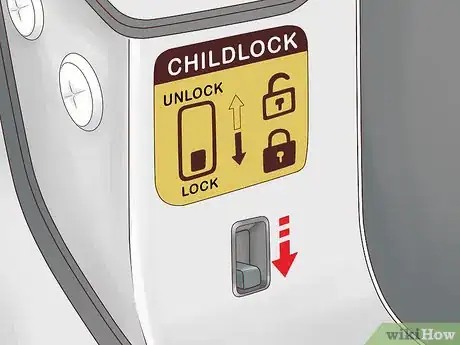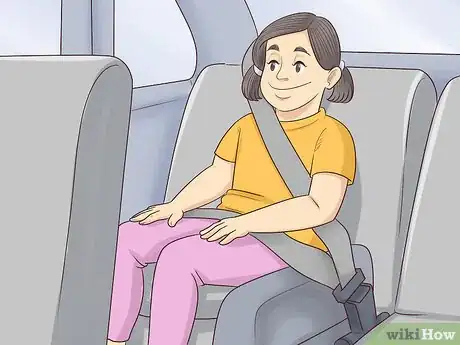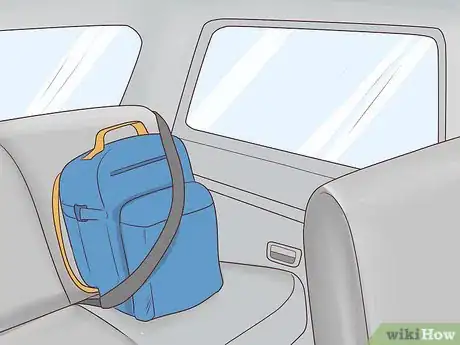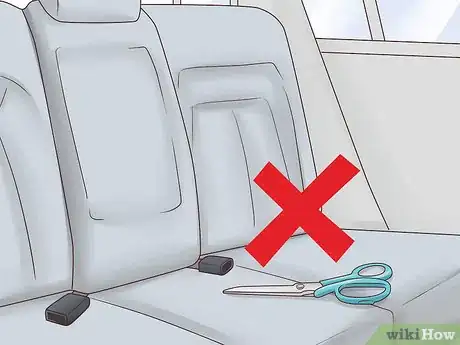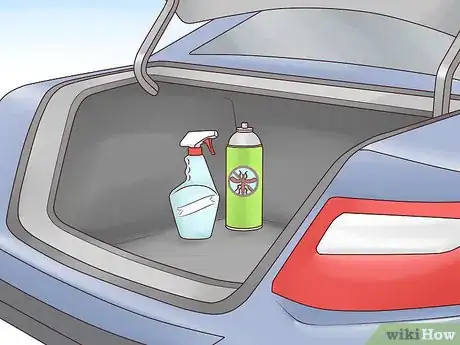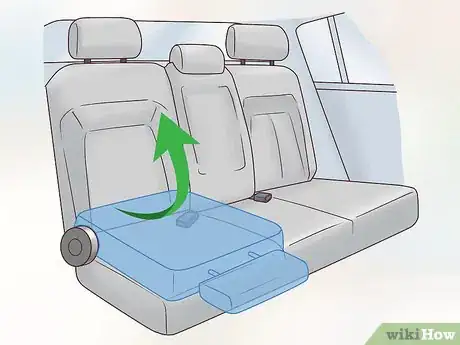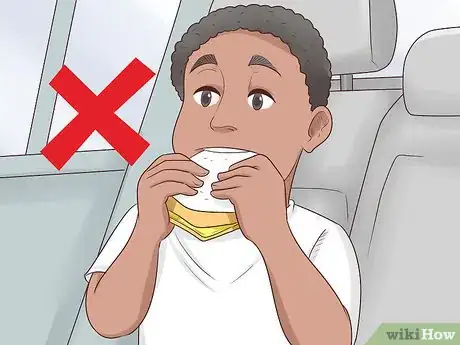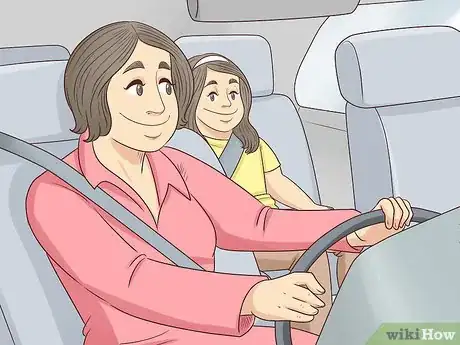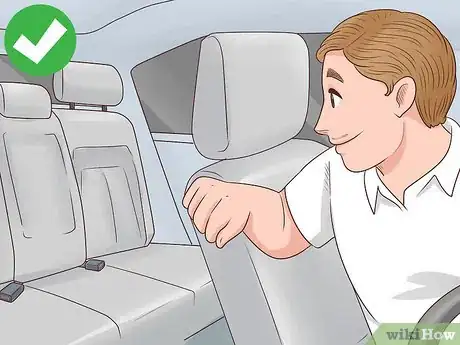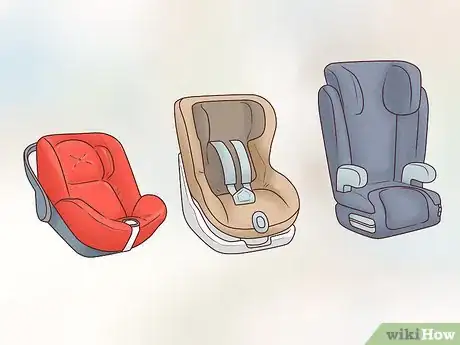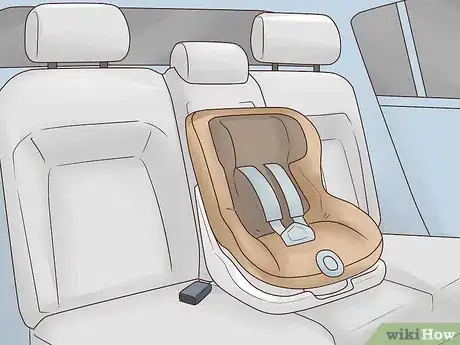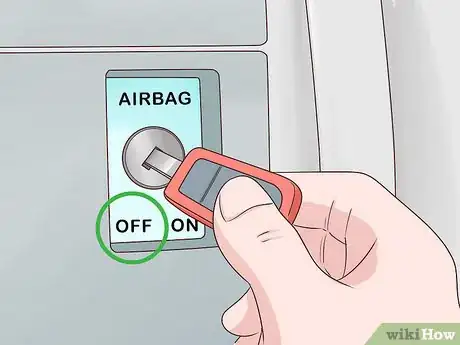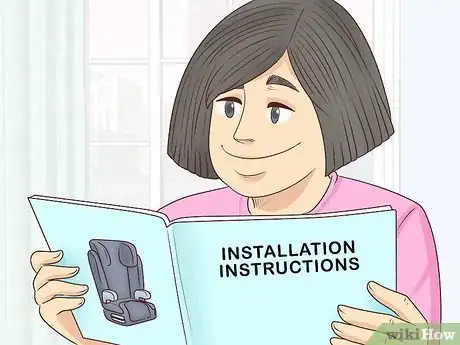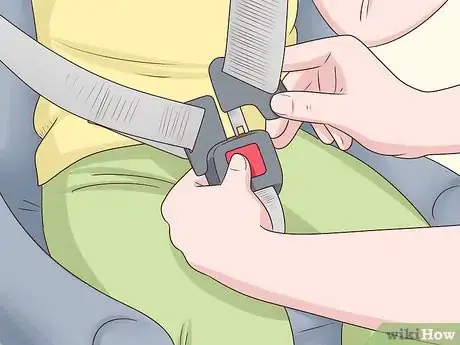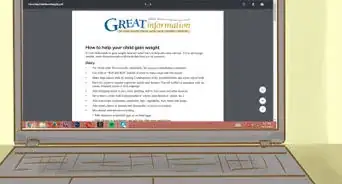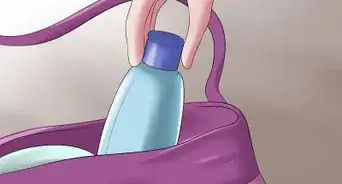This article was co-authored by Jami Yaeger. Jami Yaeger is a Parenting Specialist, Doula, and the Owner of AustinBorn, an online community offering comprehensive and modern education to growing families. With 10 years of experience, Jami specializes in whole family support for pregnancy, birth, postpartum, and parenting. Jami earned her BA in Theatre Performance from San Diego State University and earned her Certification as a Lactation Education Counselor from the University of California, San Diego. She is a Certified Infant and Child CPR Instructor, Birth and Postpartum Doula, and Childbirth Educator.
There are 13 references cited in this article, which can be found at the bottom of the page.
This article has been viewed 21,010 times.
Childproofing your vehicle keeps car rides as safe and fun for kids as playing at home. Fortunately, car companies make it easy with features like child safety locks and window locks. In addition to using your car's safety features, it's important to properly secure your child's car seat, remove hazards, and secure loose objects in the back seat. It's also important to stop potentially harmful behaviors such as eating in the car.
Steps
Using Vehicle Safety Features
-
1Enable your car's childproof locks. If your car has childproofed locks, enable them for the rear doors. You can usually do this by using the driver's door control unit for automatic locks. If you have manual locks, you usually adjust a switch on the perimeter of your car door, usually only visible when the door is open. Enabling childproof locks prevents your child from opening the car door while they're inside the vehicle.[1]
- Refer to your car's manual to learn of the steps for enabling your car's childproof locks, or contact your car's manufacturer for more information on having these types of locks installed.
- If your car does not have automatic childproof locks, place your child in the middle of the back seat where they cannot reach the door locks. As long as the middle seat has a 3-point seat belt, it is actually a much safer place for your child's car seat than on the sides of the back seat.[2]
-
2Activate the window lock for power windows. If your car has power windows, you likely have a window lock option. This should be a button on the driver's side, next to all your other power window controls. Activating the window locks prevents your child from rolling down the windows and sticking out their head or limbs.[3]
- If you're not sure where your window locks are located, check your vehicle's owner manual. If you're unsure if your car has window locks, you can always reach out to the manufacturer.
- If your car has manual windows, you likely won't have window locks. You can take your car to an auto shop to see if specialty security devices are available, but for the most part, there are limited security features for manual windows.
Advertisement -
3Fasten your child's seat belt before every ride. Seat belts are just as important for kids as they are for adults. If your child uses a car seat, always fasten the car seat restraints. If your child has moved out of car seats, make sure they are in a seat that has a three-point seat belt.[4]
- A three-point seat belt is a seat belt that crosses over the child's shoulder, as well as their lap. In most newer vehicles, all seats have three-point belts except perhaps the back middle seat.
- Every child should have their own seat belt. Never share seatbelts.
Managing Risks and Hazards
-
1Secure any loose objects. Loose items, including unsecured car seats, pet harnesses, and personal items like purses and backpacks, can be a serious hazard if you have to brake quickly. Any objects left in the back seat with your child should be secured using seat belts or other safety restraints.[5]
- If an item can't be secured in the back seat, move it to the front passenger seat or otherwise to the trunk or hatch of your car.
-
2Remove any potentially dangerous items from your back seat. Coins, small toys, and any object your child can fit in their mouth may be a choking hazard. Sharp items like seat belt cutters, window breakers, scissors, and knives should all be moved, too. Go over your backseat carefully, looking between seats, and move anything that could be dangerous.[6]
- Sharp items should be stored in a closed location that your child can't reach, such as the glove compartment or trunk.
-
3Stow potential poisons in a locked location. Car cleaning solutions and wiper fluid are two necessary but potentially poisonous car fluids. Other potentially dangerous-if-ingested materials in your car may include medications and even cosmetics and perfumes. Keep these stored in a locked location like the trunk or glove compartment.[7]
- Even if medications are prescriptions for your child, you should keep them out-of-reach to ensure that they don't ingest it when they're not supposed to.
-
4Keep foldable back seats locked into their upright positions. If you have seats that fold down, do not let your child ride in the back seat when the seats are collapsed. This helps prevent your child from accessing areas of the car they shouldn't.[8]
- This also helps reduce the risk of getting extremities caught in unfavorable areas.
- Fasten any seatbelts that are not actively in use. This keeps your child from playing around in them and getting tangled up.
-
5Stop all eating in the car. Eating in the car can be a major choking hazard. Unless it's absolutely necessary for emergency or medical reasons, don't let your child eat in the car.[9]
- Avoid eating in the car in front of your kids, too, even if the car is parked. Modeling proper safety behavior is just as important as imposing rules.
- If your child must absolutely eat in the car for medical reasons, minimize the risk by making sure there is someone in the back of the car to supervise your child and help clean up spilled food, or pull over so that you can watch your child yourself.
-
6Stay with your child in the car at all times. Never leave your child alone in the car. Even brief errands and small tasks increase the risk of heat stroke or dehydration (if it is hot outside), and abduction, as well as your child accidentally locking you out. If you have to leave the car, always bring your child with you.[10]
- In many places, it is illegal to leave a young child in the car unattended. Take your child with you whenever you have to exit the car.
-
7Look before you lock. Check the back seat every time you get out of your car to ensure that all of your children have exited the vehicle. Keep your handbag, computer bag, or work files in the back to help make it a habit to always check the back seat every time you park.[11]
- Get into the habit of checking the back seat of your car every time to avoid accidentally leaving your child behind in a locked car. You can purchase a backseat baby alarm to remind you to do this.
- Never leave your keys in your car, even when it's parked. Keys can be dangerous for your child, and unattended keys are a security risk for you, your child, and your car.
Securing Your Child's Car Seat
-
1Choose an age-appropriate seat.[12] Infants generally ride in rear-facing car seats. Putting your child in a forward-facing car seat is not recommended until they are at least 2 years old. Depending on their size, your child may need a booster seat up to the age of 4 or 5. Make sure you get a seat that is appropriate for your child's age and size.[13]
- Some children with conditions that stunt or delay physical development may need to stay in a rear-facing car seat past age 2. Talk to your child's pediatrician to make sure your child is safe to move to a forward-facing seat.
-
2Place the car seat in the back middle seat of your car. The back seat of your car is the safest location for your child in the event an accident occurs. Position the car seat in the middle of your vehicle's back seat. This minimizes the risk of injury in the event of a crash.[14]
- If you can't get a good fit from the middle seat or if your middle seat doesn't have a 3-point seat belt, position the car seat in vehicle seat that provides the best fit.
-
3Deactivate the front airbags if your car only has one row of seats. If you're driving a pickup truck or another vehicle that doesn't have a back seat area, deactivate the front airbags before installing the car seat. This minimizes the risk of injury to your child should the airbags deploy.[15]
- The vehicle's manual should show you how to deactivate the airbags. If you can't find that information in the manual, online tutorials may also be useful.
-
4Install the car seat securely in your vehicle.[16] Every car seat and every car model will have slightly different installation instructions. That's why it's important to read the instructions provided by the car seat manufacturer, as well as the section on installing car seats in your vehicle's owner manual.[17]
- Once secured, the seat shouldn't move more than 1 inch (2.5 cm) from side to side or front to back.
- Check to see if there is a car seat fitting location in your area. These are often available at fire departments and they will check to see if your car seat is properly installed.
-
5Fasten your child securely in the car seat. The car seat's belts should sit snug, firm, and flat across your child's chest.[18] They should not be able to move more than 1 inch (2.5 cm) in any direction. However, they should also not be so restrictive that they cause marks or other signs of discomfort.[19]
- Refer to the child car seat user manual to verify the proper seat belt path.
- Attend a local car seat workshop if you are unsure about the proper car seat placement and seat belt configuration. You can often find these workshops at local emergency service centers or fire departments.
Community Q&A
-
QuestionMy car's child lock is not working. How do I disable it?
 Community AnswerSome cars with the child lock function have a small switch in the door jamb to enable or disable the function.
Community AnswerSome cars with the child lock function have a small switch in the door jamb to enable or disable the function. -
QuestionI have an older vehicle. My toddler winds down the manual crank handle window with his feet and throws his shoes out. What should I do?
 Community AnswerIf there is a suitable seat belt, then place him in the middle of the backseat where he can't control the windows. Take off the shoes and keep them out of his reach, until it's time to get out of the car. You can also give him a toy to play with to distract him.
Community AnswerIf there is a suitable seat belt, then place him in the middle of the backseat where he can't control the windows. Take off the shoes and keep them out of his reach, until it's time to get out of the car. You can also give him a toy to play with to distract him.
References
- ↑ https://www.nhtsa.gov/sites/nhtsa.dot.gov/files/documents/13237-parents_guide_playing_it_safe_tagged_0.pdf
- ↑ https://www.ncbi.nlm.nih.gov/pubmed/18450877?ordinalpos=3&itool=EntrezSystem2.PEntrez.Pubmed.Pubmed_ResultsPanel.Pubmed_DefaultReportPanel.Pubmed_RVDocSum
- ↑ https://www.nhtsa.gov/road-safety/child-safety
- ↑ https://www.lifewire.com/car-safety-tech-for-kids-534835
- ↑ http://www.star-uci.org/wp-content/uploads/2011/08/ubic489n-avrahami.pdf
- ↑ https://kidshealth.org/en/parents/safety-choking.html
- ↑ https://kidshealth.org/en/parents/safety-choking.html
- ↑ https://www.edmunds.com/car-safety/how-safe-are-rear-seat-passengers.html
- ↑ https://saferide4kids.com/blog/dont-eat-and-drive-kids-eating-that-is/
- ↑ https://www.nj.gov/dcf/families/safety/car/index.html
- ↑ https://www.acf.hhs.gov/ecd/interagency-projects/look-before-you-lock
- ↑ Jami Yaeger. Parenting Specialist. Expert Interview. 29 September 2020.
- ↑ https://www.mayoclinic.org/healthy-lifestyle/infant-and-toddler-health/in-depth/car-seat-safety/art-20043939
- ↑ https://www.mayoclinic.org/healthy-lifestyle/infant-and-toddler-health/in-depth/car-seat-safety/art-20043939
- ↑ https://www.mayoclinic.org/healthy-lifestyle/infant-and-toddler-health/in-depth/car-seat-safety/art-20043939
- ↑ Jami Yaeger. Parenting Specialist. Expert Interview. 29 September 2020.
- ↑ https://www.mayoclinic.org/healthy-lifestyle/infant-and-toddler-health/in-depth/car-seat-safety/art-20043939
- ↑ Jami Yaeger. Parenting Specialist. Expert Interview. 29 September 2020.
- ↑ https://www.nhtsa.gov/equipment/car-seats-and-booster-seats
